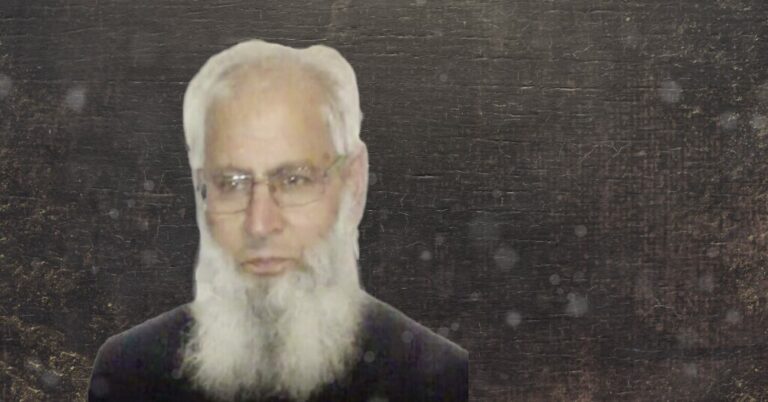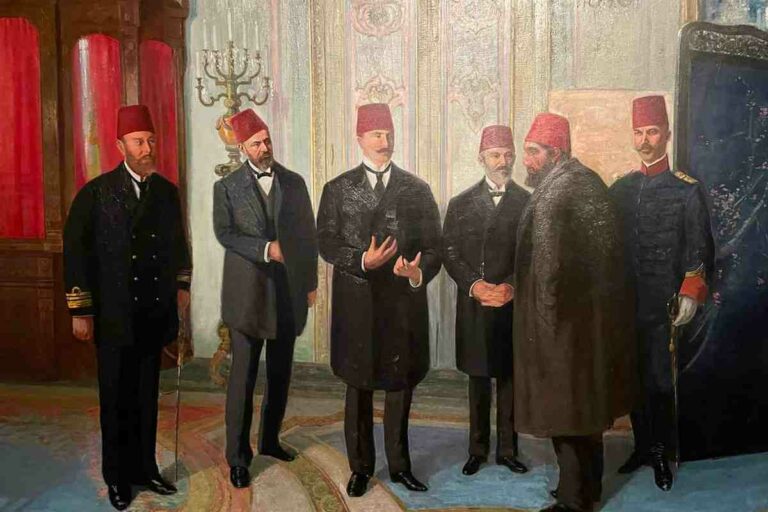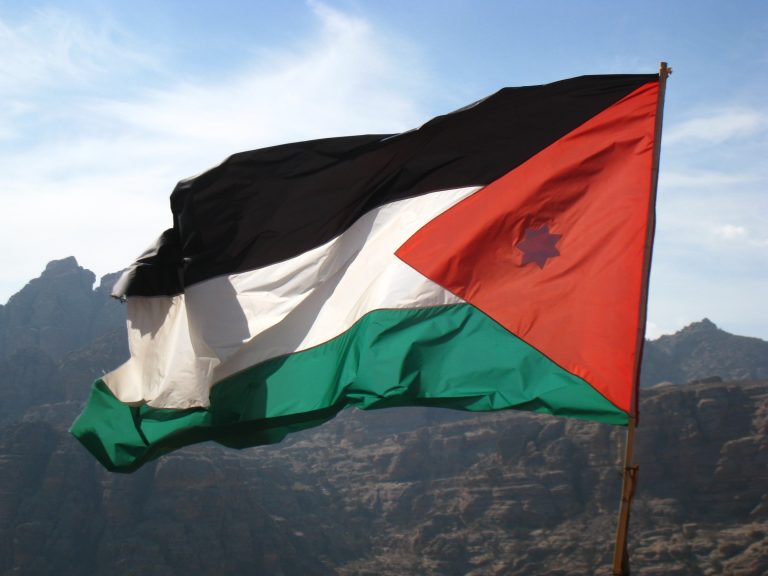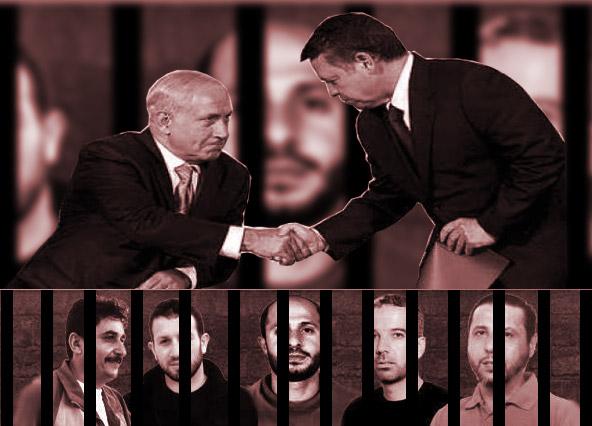Abstract: This article traces the historical developments of the Palestinian Ikhwan which led towards the establishment of Hamas in 1987. The article then continues to discuss the various roles played by Hamas in Palestinian society. The author also gives the message of Hamas by contextualising it against the backdrop of events occurring within the society. The article ends with looking at the aftermath of the January 2006 Hamas election victory as well as the recent trouble (Feb 2007) between Hamas and Fatah.
Hamas is an organisation that is perceived in a myriad of different ways depending on the political standpoint of the spectator. The United States, Canada and Europe have all acceded to Israel’s position that Hamas is a terrorist organisation and have proscribed it as such. For Palestinians on the other hand, Hamas is a victor and an entity they can rely on to lead them to emancipation from Israel’s occupation.
Hamas originated as a social Islamist group and continued in this form for decades. It began resisting Israeli occupation in 1987 when it changed its mandate, and in 2006 quickly developed into a formidable political force. Hamas’ election victory last year was unforeseen by Israel and the West who had marginalised Hamas believing they had no grassroot support and therefore allowed the Palestinian elections to proceed with Hamas participation. The impact of the election results not only effected Israel and its allies but also Hamas. With no experience at running a state, it was forced to meet national and international challenges that many analysts thought they were not capable of handling. Despite the imposition of sanctions, isolation from the outside world and stirring up of civil strife with Fatah, Hamas has remained in power for over one year and negotiated a Unity Government with the Fatah leadership. A remarkable achievement by any standards.
The Historic Roots
Hamas is an off-shoot of the Ikhwan al-Muslimoon or Muslim Brotherhood, founded by the late Imam Hasan Al-Banna of Egypt in 1928. However, while its religious teachings originated with this movement, when it’s metamorphosis into Hamas occurred, it left behind a number of the core tenants of the Ikhwan system, thus becoming an independent organisation.
The Ikhwan has a worldwide presence now, and this was a slow process of development. The movement reached the Gaza area in 1943 and Jerusalem in 1946 when branches were set up there. Interestingly, this was prior to the birth of Israel. Despite current popular conceptions, the Brotherhood maintains that its main teachings are moderate. Its position has been tainted by small radical offshoots which left the middle path of the Ikhwan in pursuit of more extreme aims. However, their prior links to the Ikhwan have meant they have become attributable to the latter by disinterested observers. According to its Principles, the main aim of the Brotherhood is to educate people at the grassroots level and increase Islamic knowledge in individuals thereby effecting changes within the societies in which they live. The eventual aim is for the development of states with greater inclinations towards Islamic teachings, using only peaceful methods. Regardless of the actions of some members of the Ikhwan, the ideology of the now global movement remains the same. However, its members have without doubt taken part in wars, such as the 1948 war in the Palestinian lands before the formation of Israel.
Between 1946 and 1987, the Ikhwan in the Palestinian territories did not participate in the violent struggle with Israel or the British during the end of the Mandate period. Their primary goal remained the Islamic teaching of individuals within the society. It was the belief of these early members that the failure of Muslims around the world was due to their deviation from the true path of Islam. Thus, they considered the priority to be educating Muslims in religion and re-establishing their commitment to Islam.
During the 1948 war with the immigrant Jewish population in the Palestinian territories, it was the Ikhwan of Egypt that sent across thousands of fighters to assist in the battle. Following the creation of Israel, the Ikhwan in Palestine existed as 2 separate entities, one in Gaza and one in the West Bank. It was only in 1967 following the 6 Day War and Israel’s occupation of these territories that the 2 branches became more united. As the occupation and its oppressive and repressive policies became entrenched, so too did popular support for the Palestinian Ikhwan.
The Birth of Hamas
By the time the First Intifada erupted, Palestinians had already spent 20 years being brutally and pitilessly oppressed in the West Bank and Gaza, and were in the throws of poverty and humiliation due to Israeli economic and social tactics, and all that was needed was a trigger for the popular uprising against the oppressive regime. This was initiated on 8th December 1987 when 4 Palestinians were killed at a bus stop in Jalabiya refugee camp by an extremist Israeli who is believed to have deliberately ploughed his vehicle into them.
It was in the days that followed this uprising or Intifada that the Palestinian Ikhwan decided to create a new organisation which would begin confronting and resisting the Israeli occupation. This new organisation was to be called Hamas (in Arabic, an acronym for “Harakat Al-Muqawama Al-Islamia” which means the Islamic Resistance Movement) which is also a word meaning ‘zeal’. The official date of Hamas’ inception is 14 December 1987. The internal debates between the Ikhwan members at that time reflected that the beginning of the Intifada meant they had no choice but to change tactic and face the occupation head on.
Hamas describes itself as ‘a Palestinian national liberation movement that struggles for the liberation of the Palestinian occupied territories and for the recognition of the legitimate rights of the Palestinians.’ In the words of Hamas’ leading founder, the late Sheikh Ahmad Yassin, ‘The movement struggles against Israel because it is the aggressing, usurping and oppressing state that day and night hoists the rifle in the face of our sons and daughters.’
Further, Hamas states: ‘In spite of the overwhelming militant image it has in the minds of many people in the West, Hamas is not a merely military faction. It is a political, cultural and grassroots organisation that has a separate military wing specialising in armed resistance against Israeli occupation.’
It is clear from Hamas’ statements and actions that it confines its resistance activities to the borders of Israel and the Palestinian territories and its struggle is simply to liberate the Palestinian people.
The Hamas Charter was written in 1988 and although it is now largely obsolete, it is the point of reference for most Western politicians and commentators. Within it, there are undeniably anti-Jewish statements and has thus led to charges of anti-Semitism against Hamas. However, what is little known is that this Charter was drafted by one member of the old Ikhwan movement, and was released as Hamas’ charter without proper consultation within the organisation. Hamas is therefore stuck with it, although many within the organisation do not accede to the contents. There have been attempts by Hamas members to clarify their position with regards to the world’s Jewry, and many re-iterate their Islamic obligation to respect those of this monotheistic faith, while isolating those Zionists who are hostile, oppressive and aggressive against Palestinians. It would be prudent for Hamas to revise its Charter to reflect its real position.
Liberation of ‘Palestine’ – Recognition of ‘Israel’
Many people are bemused by Hamas’ refusal to recognise Israel as the existence of this entity is clear and cannot be refuted. It is part of the United Nations and recognised by the international community. However, this needs to be viewed from the Palestinian optic of 1948 to understand Hamas’ position. When Israel was declared on 78% of historic Palestinian land, there was absolute rejection of its right to exist by those Palestinians who had been driven off their homelands. Since then, there has been some shift in that position as Israel’s existence became more and more entrenched over the decades. Finally, during the Oslo years, the PLO recognised Israel and Israel recognised the PLO as the representative of the Palestinian people. Hamas did not share this position.
Hamas is harshly criticised by Israel, the West and many countries around the world for refusing to recognise Israel. It is pertinent to therefore ask what exactly Hamas is trying to liberate. Is it simply the occupied West Bank and Gaza, or does Hamas still envisage a Middle East without Israel? In the early post-1948 days, Palestinian society in its entirety opposed the existence of Israel. This was for obvious reasons because they were a population who had just been driven off their lands with the threat of a brutal death if they did not flee; many still carried their house keys with them awaiting a return home; and they lived in squalid conditions as refugees. However, the ‘return home’ did not materialise, and the houses to which they held keys were demolished, their lands were cultivated by new owners and gradually, the Israeli’s entrenched their positions within historic Palestine.
While Hamas still continues to deny Israel’s existence, this is on political grounds and because to do so would deny Palestinians many of their intrinsic rights, such as Jerusalem as their capital. In addition, Israel is a state with an expansionist ideology and it has refused to accept the internationally recognised Green Line as comprising its borders. Therefore, if Hamas does in fact recognise Israel, it is recognising an entity without borders which has thus far expanded across major parts of the West Bank already. This expansion through the building of illegal settlements counteracts and thwarts the viability of an independent Palestinian state as it has carved up the West Bank into discontinuous enclaves separated by Israeli Jewish-only bypass roads.
However, despite this, Hamas is a pragmatic organisation and recognises that many Israelis now live in Israel as second or third generations who know no other home. They have not called for these people to leave Israel, but they have proposed an all inclusive society. One must question the Israeli claim that its existence is being threatened by groups such as Hamas. It is essential to look at the facts. Israel is a nuclear state that is more than capable of wiping out every Arab state that surrounds it, including the occupied territories. Palestinians on the other hand have no such capacity and therefore do not in actual fact threaten the existence of Israel in the short or even arguably, long term. Therefore, there is clearly no threat of Israel being wiped off any map or destroyed in any meaningful way. This fact reveals the real nature of such accusations against Palestinians or Hamas – as essentially baseless propaganda. On the other hand, it is clear that there is a real and present danger of Palestinians being destroyed and wiped off the map by Israel. This aim has been repeated by many Zionists since the inception of Israel, including government officials such as Deputy Defence Minster Michael Dekel who in 1987 called for transfer of Palestinians to Jordan, Minster Yosef Shapira who proposed bribing Palestinians to emigrate, and Minister Mordechai Zippori who confirmed that there was no need to worry about the Arabs as they were slowly emptying away. Furthermore, Israel’s expansionist policies, manifested in its illegal settlement building for decades, has resulted in the destruction of Palestinian homes and livelihoods in many parts of the West Bank.
Hamas’ Primary Role in Palestinian Society
Hamas’ popularity is imbedded with its social contribution to Palestinian society. At the grassroots level, it provided Palestinians under occupation with structured health, educational and social services to assist the poor and needy Palestinians suffering the most under the occupation. Hamas operates through a complex network of charities, mosques, educational establishments and ‘clubs’. These services have been provided in an honest way which was in stark contrast to the method of administration of the governing Palestinian Authority (PA). The PA has been accused of being steeped in corruption and dishonesty, and many of its officials live lavish lifestyles under the occupation, made possible by defrauding the Palestinian people and their public funds.
The Islamic charities that Hamas’ charitable wing works with and distributes income from have been targeted by Israel as they realise that Hamas’ grassroots support comes from its charitable work and social support networks. Hundreds of thousands of Palestinians are supported financially by these charities and Israel’s attempts to curtail funding to them will leave many destitute. Nevertheless, Israel has pursued this with vigour and has made many attempts, both successful and unsuccessful, to close down any international charity that attempts to give aid to any Palestinian. The US Holy Land Foundation was successfully closed down, and 5 years later, it is now emerging that US officials may have been complicit in fabricating evidence against the charity. In the UK, Interpal has been similarly targeted, but despite 10 years of pressure, continues to operate in bringing relief to the poor and needy in the occupied territories.
Hamas and the imposition of Islamic laws
While many Hamas members have religious inclinations steeped in their Ikhwan roots, there is no intention of creating an Islamic state with Shari’ah laws as they recognise that Palestinian society is secular in nature. Hamas also has the backing of many Christian Palestinians with Christians within the government it formed post January 2006. Hamas has a diverse membership including Muslims, non-Muslims, the religious and the secular who are all united with the goal of liberating their homeland.
Hamas’ Military Strategy: Suicide Bombings
February 1994 marked a turning point in the battle between Israel and the Palestinians. An extremist Israeli settler Baruch Goldstein cold-bloodedly murdered 29 Palestinian civilians at the Ibrahimi Masjid in Hebron using machine gun fire. Hamas vowed revenge, which came in the form of a suicide attack against Israeli civilians within the Israeli city of Afula killing eight. Prior to this, Hamas had restricted its resistance activities to targeting Israeli military objects despite the number of Palestinian civilians being killed by Israel.
Since then, Hamas on numerous occasions attempted to negotiate a truce with Israel whereby both sides agreed that civilians would not be targeted. Discussions were rejected by Israel on the basis that it would not negotiate with ‘terrorists’. Hamas has continued to support such attacks, and every time it has been in response to the killing of Palestinian civilians. While deaths on both sides are equally appalling and neither should be belittled, the death toll on the Palestinian side has always been much higher than that suffered by Israel. Since 2000, it has been four times greater.
The suicide attacks against Israeli’s have been the main reason for Hamas being isolated internationally and being proscribed as a terrorist organisation. Israel has portrayed these attacks as being unprovoked attacks against its civilians by a terrorist organisation that wishes to wipe out Israel. While in reality these missions have always been in direct response to the attack and killing of Palestinian civilians; nonetheless, it is the targeting of civilians that is the crime under international law. However, the huge discrepancy between the treatment of Israel and the Palestinians needs to be dealt with – as the Israeli army has not been similarly proscribed internationally for its deliberate targeting of Palestinian civilians.
Hamas: An External Perspective
The problem for Hamas is the demonic image it has in the West, which led it to be castigated as a terrorist organisation by the US, Europe and Canada; some may argue the genesis of this image being Tel Aviv. These countries failed to assess the threat of violence from Hamas against the state sponsored terrorism Hamas accuses Israel of. The figures reflect an imbalanced conflict with over four times the number of Palestinian deaths as compared with Israeli deaths since the start of the second intifada in September 2000. While the concept of suicide bombings is despicable to most in the West, its end result is clearly the same as the Israeli Occupation Forces military bombardments of Palestinian population centres, which usually leave a higher death toll but attract lower media coverage. The latter can be attributed to Israel’s tight controls on access to the occupied territories and the reports that emerge from within.
No doubt Hamas has a military wing, whose missions have been labelled terrorist. However, the intricacies of the organisation are far greater than that role. While the occupation and its repressive policies in the West Bank and Gaza existed since 1967, it was not until 1994 that Hamas first undertook a suicide bombing military mission, which was in response to the massacre in Hebron. Prior to this, all peaceful and conciliatory methods of resistance were employed against Israel. Since 1994, Hamas has restricted its struggle to the area which was (pre-1948) considered as being Palestine. It has not targeted anyone outside of these territories and deliberately employed this strategy to make clear that its struggle is to liberate Palestine.
Hamas: the Political Victory of January 2006
In simple terms, Hamas’ initial mission could be described as defensive, rather than offensive. Hamas was formed on the very basis of resistance, and took the name the ‘Islamic Resistance Movement’ for this reason. It began operating on the logic that wherever a military occupation existed, there should be military resistance. Thus, once the occupation ended, so too would the mission of Hamas. This initial concept is now being challenged by the fact that Hamas has gained legitimate political power over the Palestinian population, and thus must now govern the Palestinian people and by extension, must exist beyond the occupation.
Hamas’ decision to participate in the elections of 2006 was because it wanted, and expected, enough votes and corresponding seats to effectively challenge the Fatah leadership and prevent it from compromising the Palestinian position any further by conceding more of their rights away to the Israelis. It was not expecting to win with such a huge majority. The election results meant that a government had to be formed speedily. While Hamas made the endemic endeavours necessary to form a government, Israel, Washington, London and then Europe mobilised against them. The Palestinians have since then faced sanctions and an international embargo.
The bitter irony is that they conformed to the democratic process when they elected Hamas, which was widely acclaimed by the UN independent observers who were stationed there during the elections, yet they were then punished for choosing a party that Israel and the US were not prepared to deal with. The shocking duplicity of this position has been hard to swallow by many in the West, as well as the Palestinians themselves. Thus, even following a year of intentional starvation of the Palestinian people, Hamas still commands popular support.
The Way Forward
In February 2007, Hamas complied with international pressure and agreed with Fatah to form a Unity Government where Hamas Ministers would be a minority. Thus, for the sake of the Palestinian people, they have effectively conceded their majority in the Palestinian Authority. However, the signs from Israel and Washington were that it was not enough. Hamas has two options. It can forfeit its political position in Palestinian society by choosing not to stand in the next elections, or it can choose to push through its rightful position according to the principles of democracy and maintain its position in the government and force the international community, one by one, to accept it as the elected representative of the Palestinian people.
Further Reading
- Hamas: A Beginner’s Guide – Khaled Hroub
- Hamas: Unwritten Chapters – Azzam Tamimi






